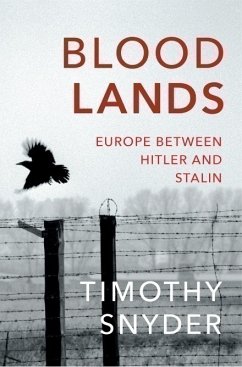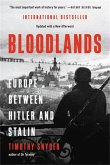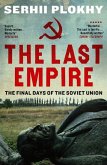A powerful and revelatory history book about the bloodlands - the lands that lie between Stalin's Russia and Hitler's Germany - where 14 million people were killed during the years 1933 - 1944.
In the middle of Europe, in the middle of the twentieth century, the Nazi and Soviet regimes murdered fourteen million people in the bloodlands between Berlin and Moscow. In a twelve-year-period, in these killing fields - today's Ukraine, Belarus, Poland, Western Russia and the eastern Baltic coast - an average of more than one million citizens were slaughtered every year, as a result of deliberate policies unrelated to combat.
In this book Timothy Snyder offers a ground-breaking investigation into the motives and methods of Stalin and Hitler and, using scholarly literature and primary sources, pays special attention to the testimony of the victims, including the letters home, the notes flung from trains, the diaries on corpses. The result is a brilliantly researched, profoundly humane, authoritative and original book that forces us to re-examine one of the greatest tragedies in European history and re-think our past.
In the middle of Europe, in the middle of the twentieth century, the Nazi and Soviet regimes murdered fourteen million people in the bloodlands between Berlin and Moscow. In a twelve-year-period, in these killing fields - today's Ukraine, Belarus, Poland, Western Russia and the eastern Baltic coast - an average of more than one million citizens were slaughtered every year, as a result of deliberate policies unrelated to combat.
In this book Timothy Snyder offers a ground-breaking investigation into the motives and methods of Stalin and Hitler and, using scholarly literature and primary sources, pays special attention to the testimony of the victims, including the letters home, the notes flung from trains, the diaries on corpses. The result is a brilliantly researched, profoundly humane, authoritative and original book that forces us to re-examine one of the greatest tragedies in European history and re-think our past.

Terror und
Vernichtung
In Amerika wurde Timothy Snyders „Bloodlands“ gefeiert, die Historiker hierzulande zeigten sich bei Erscheinen der deutschen Ausgabe vor zwei Jahren verhaltener. Stilistisch brillant, so die Kritik, lässt die Monografie über die 14 Millionen Menschen, die von 1933 bis 1945 Stalins Terror sowie der NS-Vernichtungspolitik im Gebiet von Zentralpolen bis Westrussland zum Opfer fielen, jedoch viele Fragen offen. Etwa die, in welchem Zusammenhang die Massenmorde der beiden Regime zueinander stünden. Historische Fachdebatten, bei denen sicher noch der „Historikerstreit“ nachwirkt, mal beiseitegelassen: „Bloodlands“, ausgezeichnet mit dem Leipziger Buchpreis zur Europäischen Verständigung, sollte jeder lesen, der das „Zeitalter der Extreme“ (Hobsbawm) verstehen will. Auf der Basis jeder Menge statistischen Materials bemüht sich Snyder, die Opfer – Frauen, Kinder, Alte, Kriegsgefangene – sprechen zu lassen. Eine von ihnen, die Minsker Jüdin Junita Wischnjatskaja, schrieb vor ihrer Erschießung in einem Abschiedsbrief: „Ich habe solche Angst vor diesem Tod, denn die kleinen Kinder werden lebend in die Grube geworfen. Auf Wiedersehen für immer.“
FLORIAN WELLE
Timothy Snyder:
Bloodlands. Europa zwischen Hitler und Stalin. dtv, München 2013. 524 Seiten,
14,90 Euro.
DIZdigital: Alle Rechte vorbehalten – Süddeutsche Zeitung GmbH, München
Jegliche Veröffentlichung und nicht-private Nutzung exklusiv über www.sz-content.de
A hugely important historian of this nightmarish era. Nobody has explained it this way before William Leith Evening Standard









